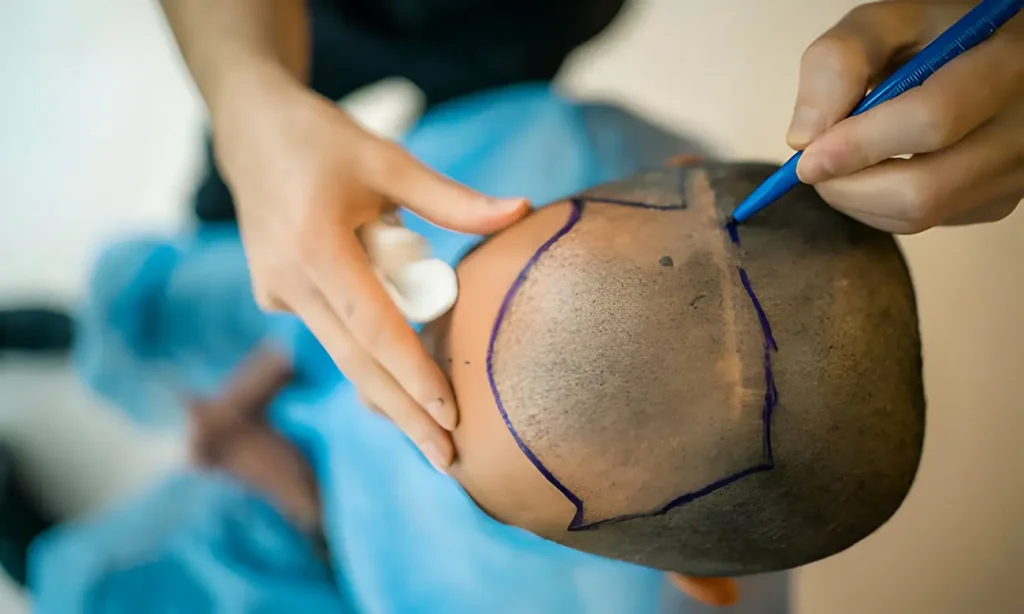Type and hit Enter to search
Experts in aesthetic surgery, dermatology, and beauty bring you the latest trends, research, and advice to help you make informed decisions about your appearance and health.
A web platform dedicated to aesthetic surgery, dermatology, and beauty, where expertise meets innovation, and your desires and needs become our mission. In a world where appearance and health go hand in hand, our platform leads the revolution, delivering the latest trends, research, and expert advice directly to you.
Our team consists of highly skilled professionals in the fields of aesthetic surgery and dermatology, committed to providing reliable information and guidance that will help you make informed choices about your appearance and well-being. We understand that every individual has unique needs and desires, which is why we approach each person with the utmost care and professionalism.
Powered by Aestetica Web Design © 2024
Choi Pen in Hair Transplantation: When a Little… Artistic Touch is Needed
Hair transplantation – once reserved for Hollywood faces and football legends, is now more accessible than ever. And at the center of that revolution? The Choi pen – a magic wand that transforms bald heads into lush oases. Forget about painful procedures and desperate attempts with miracle lotions. This is the story of the Choi pen, your potential ticket back to the club of lush hair.
What is the Choi Pen and How Does it Work?
The Choi pen, also known as an implanter in hair transplantation, is not just an ordinary “pen” in the world of hair transplantation, but a sophisticated instrument that revolutionizes the way hair follicles are transplanted. Imagine it as a miniature, precise device that allows surgeons to easily “plant” hair follicles into the scalp, like a gardener carefully planting seedlings. At the top of this “magic wand” is a hollow needle, and inside it is a hidden mechanism that allows for controlled extraction and implantation of follicles, like a clip that gently holds a grain before planting it in the ground.
Unlike traditional methods that use tweezers to extract and implant follicles, the Choi pen allows the surgeon to directly implant follicles into the scalp, without the need to open channels beforehand. This method of hair transplantation, known as DHI (Direct Hair Implantation), not only reduces tissue trauma but also allows for faster recovery, similar to how a smaller cut heals faster than a larger wound.
History of the Choi Pen: From Innovation to Standard
The Choi pen is not a newcomer to the hair transplant scene. Its story begins in South Korea, where Dr. Kyung Ju Choi, an innovative surgeon, devised this tool to improve the hair transplant process and make it less invasive. The first models of the Choi pen were simpler, but they laid the foundation for today’s sophisticated versions, similar to how the first cars were simple but paved the way for today’s technologically advanced vehicles.
Over time, the Choi pen gained popularity among surgeons around the world, and its effectiveness and benefits have been recognized in numerous clinical studies. Today, the Choi pen is considered the gold standard in the DHI method of hair transplantation, much like the scalpel is considered an indispensable tool in surgery.
Types of Choi Pens: Different Models for Different Needs
As in the world of cars, there are different models of Choi pens, each with its own specifics and purpose. Some models have needles of different diameters, from 0.6 mm to 1.0 mm, which allows for adaptation to different types of hair follicles, similar to how different keys open different locks. Other models have different follicle container capacities, from 1 to 5 follicles, which affects the speed and efficiency of the procedure, like different sized buckets used for different amounts of water.
Choosing the right Choi pen depends on the individual needs of the patient, the type of transplant, and the surgeon’s preferences. For example, for a patient with thin hair, the surgeon might choose a Choi pen with a smaller needle diameter, while for a patient with thick hair, they might choose a Choi pen with a larger needle diameter. It is important to consult with an experienced professional to choose the model that will best suit your needs and expectations, similar to how you would consult with an architect before choosing a plan to build a house.
Choi Pen and the DHI Method of Hair Transplantation: An Inseparable Duo
The Choi pen and the DHI method are like Batman and Robin, Sherlock Holmes and Watson, or Lennon and McCartney – an inseparable duo that achieves extraordinary results together. The DHI method of hair transplantation, or direct hair implantation, is based on the direct implantation of follicles into the scalp without prior opening of channels, similar to how an artist directly applies paint to a canvas without prior sketching.
This is where the Choi pen comes into play. Its precision and control allow surgeons to implant follicles in a precisely determined direction, angle, and depth, resulting in a more natural appearance and hair density, similar to how an experienced chess player places pieces on the board with accuracy and strategy. The Choi pen is key to the success of the DHI method and makes it one of the most advanced and effective methods of hair transplantation today, like the latest software that improves computer performance.
Precision and Control: The Art of Hair Transplantation
When it comes to hair transplantation, precision is not just desirable, it is key. Each hair follicle is like a jewel that needs to be carefully placed to shine its brightest. The Choi pen, with its sophisticated mechanism and ergonomic design, allows surgeons to become true artists in hair transplantation.
Freeze the frame for a moment of implantation. The surgeon, like a painter gently pulling a brush across a canvas, uses the Choi pen to precisely place each follicle into the scalp, at the ideal angle and depth. This level of control is not just a matter of aesthetics, but also of science. The correct angle and depth of implantation ensure that the follicle receives optimal blood supply and nutrients, which is key to its growth and survival.
The Choi pen allows surgeons to create a natural hairline, following the individual characteristics of the patient. It’s like a tailor sewing a custom suit, not buying it off the rack. The result is hair that looks natural and harmonious with the facial features, not like something “glued” to the head.
Reduced Trauma and Faster Recovery: A Gentle Approach to Hair
Hair transplantation is no joke. It is a surgical procedure that, like any other, carries a certain risk of tissue trauma. However, the Choi pen changes the game. Its thin needle and gentle implantation mechanism minimize tissue trauma, making the procedure less invasive and more comfortable for the patient.
Imagine planting flowers in a garden. Would you rather use a shovel or a trowel? Probably a trowel, because it is gentler on the plants and the soil. The same goes for hair transplantation. The Choi pen is like a trowel, while traditional methods are like a shovel.
Less trauma means less scarring, less pain, and faster recovery. Patients who undergo Choi pen hair transplantation can often return to their daily activities within a few days, while recovery from traditional methods can take weeks.
Increased Hair Density: The Choi Pen as the Key to Lush Hair
Hair density is one of the key factors that affect its appearance. The denser the hair, the fuller and healthier it looks. The Choi pen, with its ability to precisely implant follicles, allows surgeons to achieve greater hair density than is possible with traditional methods.
It’s like planting grass on a lawn. The more seeds you plant, the denser the lawn will be. Similarly, the more hair follicles you implant, the denser the hair will be. The Choi pen allows surgeons to “sow” more follicles per square centimeter, resulting in lusher and fuller looking hair.
Increased hair density not only improves aesthetic appearance but can also have a positive impact on the patient’s self-confidence. Thick hair is often associated with youth and vitality, and its loss can be a source of stress and insecurity. The Choi pen can help patients regain not only their hair but also their self-confidence.
A More Natural Look: Hair That Looks Like It’s Always Been There
One of the biggest challenges in hair transplantation is achieving a natural look. No one wants their transplanted hair to look like a wig or something “glued” to their head. The Choi pen, with its ability to implant follicles in a natural direction and angle, allows surgeons to create hair that looks like it’s always been there.
It’s like painting a portrait. You want the painting to look realistic, not like a caricature. Similarly, you want your transplanted hair to look natural, not like something artificially created. The Choi pen allows surgeons to achieve that natural look, creating hair that blends with existing hair and looks like it’s always been a part of you.
Consultation and Planning: The First Step Towards New Hair
The journey to thicker hair begins with a consultation with a surgeon specializing in hair transplantation. This first meeting is not just a formality, but a crucial step in the process. The surgeon will examine your scalp in detail, assess the degree of hair loss, hair type, and follicle quality. Like a detective looking for clues, the surgeon will analyze your health status and medical history to determine if you are a suitable candidate for Choi pen hair transplantation.
But the consultation is not just about the medical aspects. It is an opportunity to express your wishes and expectations. Do you want to restore your hairline, fill in thinning areas, or simply increase hair density? The surgeon will carefully listen to your wishes and, like an architect designing a house, create a personalized hair transplant plan that will meet your individual needs and aesthetic goals.
The Hair Transplant Procedure: Step by Step with the Choi Pen
Once the hair transplant plan is defined, comes the “D” day – the day of the procedure. The Choi pen hair transplant procedure is usually performed under local anesthesia, which means you will be awake but will not feel pain. The first step is to extract hair follicles from the donor area, usually from the back of the head. This process is similar to picking apples from a tree – the surgeon carefully selects healthy follicles that will be transplanted.
Then comes the main attraction – the Choi pen. The surgeon will fill the Choi pen with the extracted follicles and, like an artist creating a masterpiece, begin to implant them into areas of the scalp where the hair is thinning or missing. Thanks to the precision of the Choi pen, the surgeon can control the angle, direction, and depth of each implant, ensuring a natural look and hair growth.
Recovery and Aftercare: How to Ensure the Best Results
After a Choi pen hair transplant, a recovery period follows, which is crucial for the success of the procedure. Recovery is usually quick and mostly painless but requires some care and attention. The first few days after the procedure, you may experience mild discomfort or swelling, similar to after a minor sports injury.
The surgeon will give you detailed instructions on scalp and transplanted hair care. This may include washing your hair with a special shampoo, avoiding direct sunlight and physical activities, and sleeping on a special pillow to protect the implants. By following these instructions, you can ensure that your new hair takes root properly and begins to grow.
Expected Results and Long-Term Care: Hair for a Lifetime
The Choi pen hair transplant is not a magic trick that will transform your scalp overnight. Results require patience. The first signs of hair growth usually appear a few months after the procedure, and full results can be expected within a year. It is important to have realistic expectations and be patient, as hair grows at its own pace, like a plant that needs time to bloom.
Long-term hair care after transplantation is as important as the procedure itself. This includes a healthy diet, regular hair washing with a mild shampoo, avoiding harsh chemicals, and sun protection. Taking care of your new hair is an investment in the future, much like regular car maintenance ensures its long life.
Innovations and Advances in Hair Transplantation
The world of hair transplantation does not stand still. On the contrary, it is in constant motion, like a river that continuously flows and changes its course. The Choi pen, although already a revolutionary tool, is no exception. Scientists and engineers are tirelessly working to improve its performance, precision, and efficiency.
Imagine the Choi pen of the future: even thinner needles, larger follicle container capacity, perhaps even built-in sensors that will monitor follicle vitality during transplantation. Who knows, maybe one day there will even be a “smart” Choi pen that can connect to a computer and provide the surgeon with even more information and control.
But innovations are not limited to the Choi pen itself. Research is also being conducted in the field of stem cells, gene therapy, and other advanced technologies that could further revolutionize hair transplantation. Maybe one day we will be able to grow new hair follicles in the laboratory or even reprogram existing cells to produce new hair.
The Choi Pen and Personalized Hair Transplantation: Tailor-Made Hair
Personalized medicine is the future of healthcare, and hair transplantation is no exception. The Choi pen, with its ability to precisely implant follicles, allows surgeons to tailor the procedure to the individual needs of each patient.
It’s like having a tailor who sews a custom suit for you, rather than buying it off the rack. The surgeon will take into account your specific characteristics, such as hair type, density, growth direction, and desired results, and will customize the hair transplant procedure to achieve the best possible results for you.
Personalized medicine in hair transplantation not only ensures better aesthetic results but also increases patient satisfaction. When you feel like you have received treatment that is specifically tailored to you, you are more likely to be satisfied with the results.
The Choi Pen in the Right Hands
Like any powerful technology, the Choi pen carries a certain responsibility. Its use must be ethical and responsible. This means that hair transplantation should be performed only in medically justified cases when there is actual hair loss that affects the patient’s quality of life.
Also, it is important that hair transplantation is performed only by qualified and experienced surgeons who have received appropriate training in the use of the Choi pen. This will ensure that the procedure is performed safely and effectively and that patients receive the best possible care.
The Choi Pen and Self-Confidence: More Than Just Hair
Hair loss can have a profound impact on self-confidence and quality of life. Many people who suffer from hair loss feel insecure, unattractive, and less worthy. Choi pen hair transplantation can help them regain not only their hair but also their self-confidence.
When you look in the mirror and see full, thick hair, it can have a transformative effect on your self-esteem. You can feel more confident, attractive, and ready to face the world. Hair transplantation is not just about hair, but also about putting a smile back on your face and joy back into your life.
Biography of Dr. Gorana Kuka Epstein
Dr. Gorana Kuka Epstein is a specialist in plastic and aesthetic surgery. She is a professor at the Miami University School of Medicine, a diplomate of the American Board of Hair Restoration Surgery, and a doctoral candidate at the Faculty of Medicine at the University of Novi Sad. Dr. Kuka Epstein is the founder and director of the FoundHair Training program, the founder of the Center for the Treatment of Female Hair Loss, the director of the research department at the Foundation for Hair Restoration in Miami, and the founder of the Dr. Gorana Kuka Foundation.
Reference





